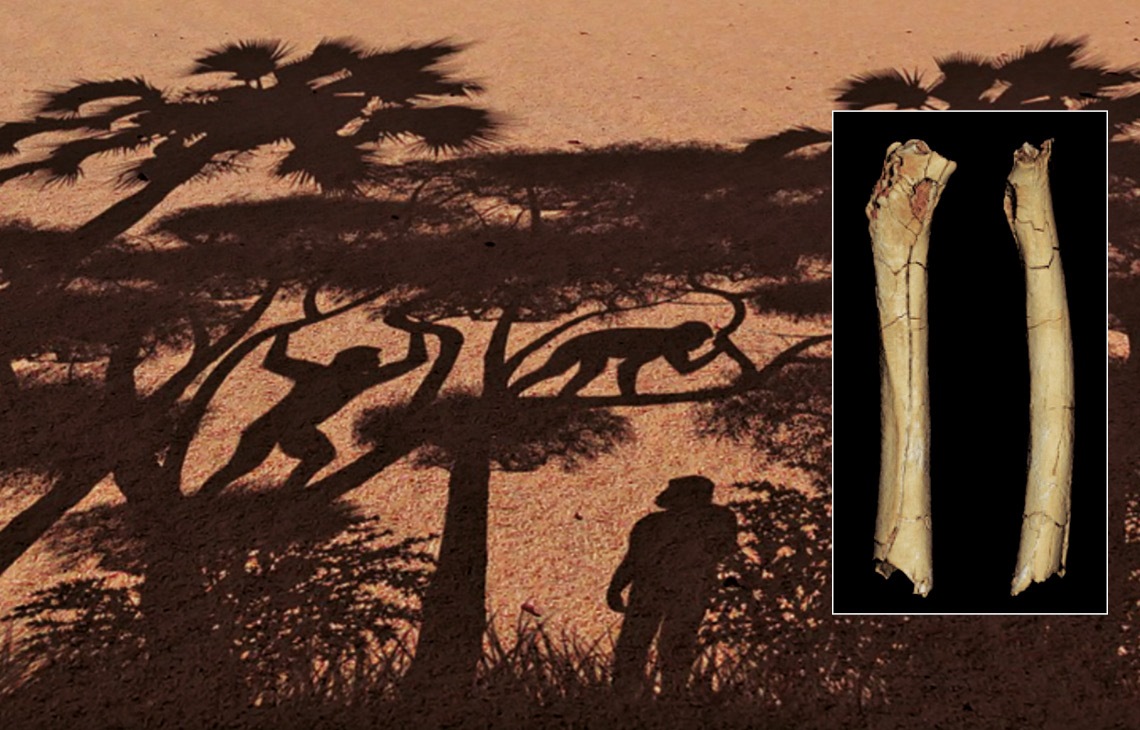With a flat face, small canine teeth, and a heavy brow, Sahelanthropus tchadensis, considered the oldest representative of the human lineage of hominids, lived around 7 million years ago. Discovered in the Djurab Desert in Chad in 2001, it was initially believed to have been a quadruped. Now, scientists at the University of Poitiers, France, and the University of N’Djaména, Chad, propose that it may have been a biped, having examined the internal and external structure of a partial femur and two arm bones and comparing them with those of living apes and other representatives of the human lineage. The characteristics of the femur are similar to those of hominids and not apes. The conclusion was that S. tchadensis was able to walk on two legs and also spent time in the trees. The density of the femur also indicated it was placed under loads compatible with upright walking. If confirmed by other studies, the conclusion would mean that upright walking was one of the first distinguishing features of the human lineage, which diverged from chimpanzees at the time. The brain had a volume of 320 to 380 cubic centimeters (cm3), close to that of a current chimpanzee and far smaller than the 1,200–1,400 cm3 of Homo sapiens (Nature, August 24).
RepublishPaleontology
The first bipedal hominids

Femur analysis (inset) indicated that Sahelanthropus tchadensis may have been bipedal and lived in trees
DAVER, G. et al. Nature. 2022